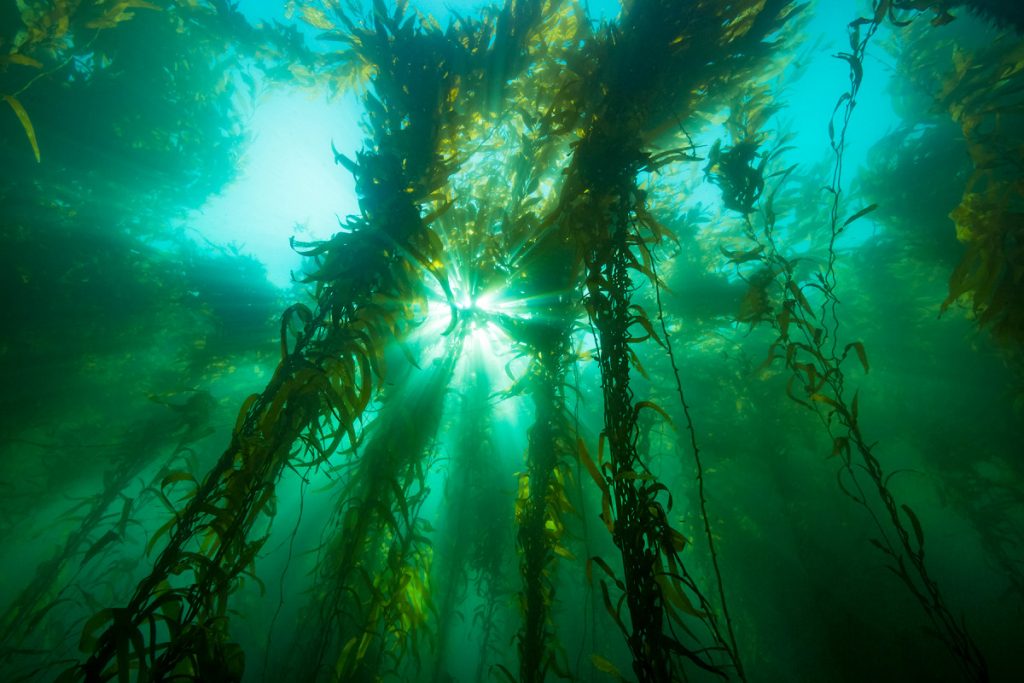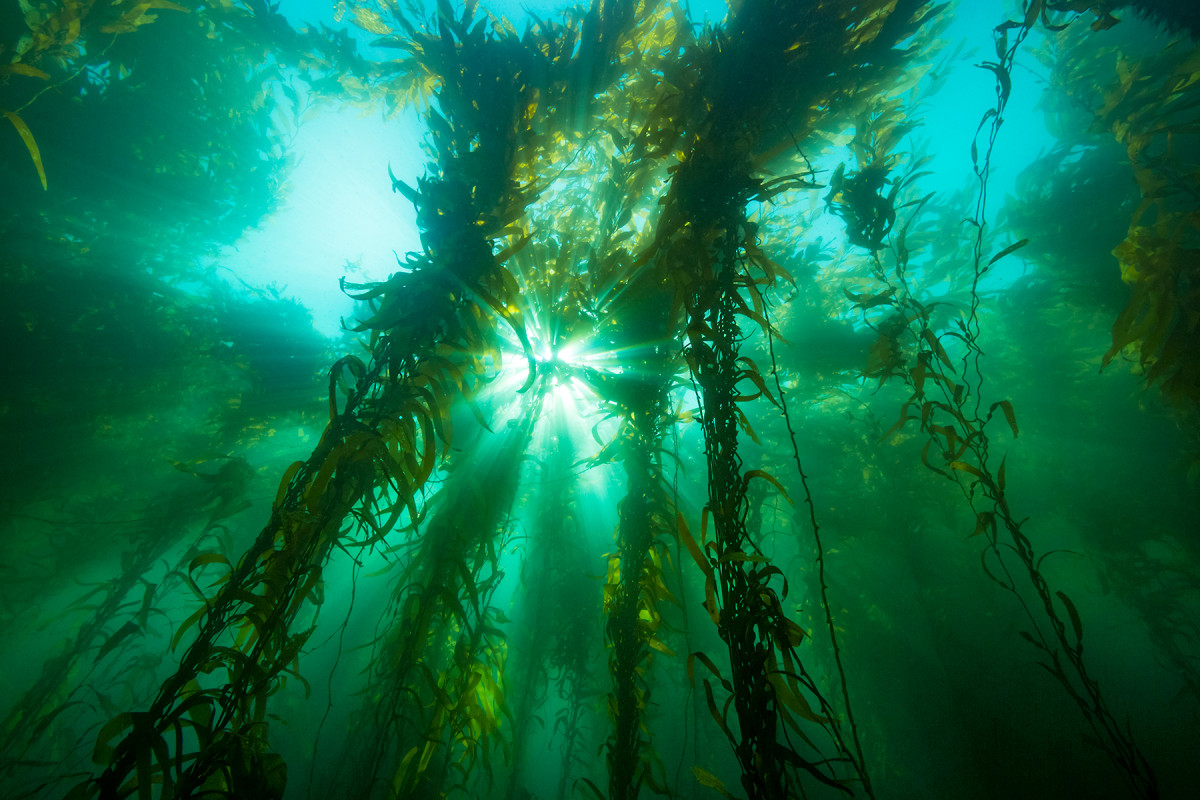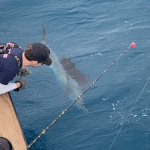Article Courtesy: rollingstone.com | By: Jeff Goodell | Originally Published: April 2, 2020 | Please click here for original article.
The ocean is undergoing unprecedented changes. What does it mean for marine life, the planet, and us?
The blob went unnoticed at first. In the summer of 2013, a high-pressure ridge settled over a Texas-size area in the northern Pacific, pushing the sky down over the ocean like an invisible lid. The winds died down, and the water became weirdly calm. Without waves and wind to break up the surface and dissipate heat, warmth from the sun accumulated in the water, eventually raising the temperature by 5 degrees Fahrenheit — a huge spike for the ocean.
When scientists noticed this temperature anomaly in the satellite data, they had never seen anything like it. Everyone knew about heat waves on land, but in the ocean? “As the Earth heats up, the ocean is changing in very dramatic ways,” says Jane Lubchenco, a marine ecologist and former head of the National Oceanic and Atmospheric Administration. “It is less predictable, and we are seeing more surprises. The heat waves are one of those surprises.”

Nick Bond, a climatologist at the University of Washington, nicknamed the Pacific heat wave “the Blob,” after a campy 1958 sci-fi movie about a gelatinous monster that arrives on Earth in a meteor and eats up a small town. But this Blob would turn out to be far more deadly than anything Hollywood imagined.
The hot water killed the phytoplankton — a form of microscopic algae — that live in the top few hundred feet of the ocean. The tiny organisms that feast on them starved, including krill, the small shrimplike creatures that swarm the ocean by the billions and are the preferred food for whales, salmon, seabirds, and many other creatures. The population of herring and sardines, an important food source for many larger fish and marine mammals, also declined. By killing phytoplankton, the Blob disrupted the entire Pacific food chain.
Over the next two years, it drifted down the coast of Alaska to California, eventually responsible for thousands of whale and sea lion strandings on beaches along the coast; the collapse of the Alaska cod fishery; the bankruptcy of fishermen and worker layoffs at fish-processing plants; the vanishing of great kelp forests on the Pacific coast; and the starvation and death of a billion seabirds — the largest single mass mortality of seabirds ever recorded. Dead murres littered beaches like washed-up plastic bottles.
And its destruction was not limited to the ocean: The Blob changed the weather on the Pacific coast, pushing heat inland and altering rainfall patterns, contributing to the California drought. “It raised temperatures on the coast all the way from British Columbia down to Southern California,” says Daniel Swain, a climate scientist at UCLA. The big question is how much the Blob accelerated wildfires; 2017-18 saw historic blazes, including the Camp Fire in Northern California, the largest in the state’s history, which burned more than 150,000 acres and killed at least 85 people. Swain says the Blob increased nighttime temperatures in the western third of the state, where many of the wildfires flared. “Firefighters will tell you that’s really important, because wildfires often lie down at night, burning more slowly and behaving less erratically, becoming less dangerous to approach for human crews. While the Blob was off the coast, that didn’t happen.”
All in all, the Blob was a slow-rolling climate catastrophe. It’s also compelling evidence of how tightly all life on Earth is linked to the ocean. Because we live on land, we often think of the climate crisis as a terrestrial event. But as the planet heats up, it’s what happens in the ocean that will have the biggest impact on our future.
Earth was not born with an ocean. Water arrived here from the cold depths of space with icy asteroids and comets, which bombarded the planet during the first few million years of its existence. It’s been a watery world ever since. Today, 97 percent of the Earth’s water is in the ocean, which covers more than 70 percent of the planet. The ocean was the petri dish for the creation of life, and we carry that early history within us. The salt content of our blood plasma is similar to the salt content of seawater. “The bones we use to hear with were once gill bones of sharks,” says Neil Shubin, professor of anatomy at the University of Chicago and author of Your Inner Fish: A Journey Into the 3.5 Billion-Year History of the Human Body. “Our hands are modified fish fins, and the genes that build our basic body architecture are shared with worms and fish.”
Despite our intimate connection to the sea, for most of human history the ocean has been as strange to us as a distant planet, a realm of monsters and mayhem. Humans stuck close to the shore, mostly, and our ignorance about the ocean was profound. It still is. Scientists have only a vague understanding of exactly how ocean currents are driven, or how ocean temperatures impact cloud formation, or what creatures thrive in the depths. Far more people have been to the moon, which is 240,000 miles above us, than have been to the deepest part of the ocean, which is seven miles down. Eighty percent of the ocean remains unmapped, unobserved, unexplored. Marine biologists don’t know how sharks sleep or an octopus learns to open a jar.
But scientists know enough to know that the ocean is in trouble. Largely because of overfishing, 90 percent of the large fish that were here in the 1950s are now gone. One metric ton of plastic enters the ocean every four seconds (at this rate, there will be more plastic than fish in the ocean by 2050). But the biggest problem, thanks largely to our insatiable appetite for fossil fuels, is that the ocean is heating up fast. The past five years have been the five warmest ever measured in the ocean, with 2019 the hottest ever. According to one study, the amount of heat being added to the ocean is equivalent to every person on the planet running 100 microwave ovens all day and night.
Until now, the ocean has been the hero of the climate crisis — about 90 percent of the additional heat we’ve trapped from burning fossil fuels has been absorbed by it. “Without the ocean, the atmosphere would be a lot hotter than it already is,” says Ken Caldeira, a climate scientist at the Carnegie Institution for Science in Palo Alto. But the heat the ocean absorbed has not magically vanished — it’s just stored in the depths and radiated out later. By absorbing and slowly releasing heat, the ocean reduces the volatility of our climate, cushioning the highs and lows as temperatures change from day to night, winter to summer. It also means the heat will continue to seep out for centuries to come, slowing any human efforts to cool the planet.
“The ocean is the main driver of our climate system,” Hans-Otto Pörtner, a scientist at the Alfred Wegener Institute for Polar and Marine Research in Germany, tells me. One of the central functions of the ocean, Pörtner says, is to redistribute heat from the tropics toward the poles via deep currents like the Gulf Stream system, which begins in the Southern Ocean near Antarctica, flows across the equator, up to the Arctic and back again. “Even small changes in that system can have large impacts on things like the size and intensity of storms, rainfall patterns, sea-level rise,” says Pörtner, “and of course the habitats of all the creatures that live in the ocean.”
The ocean is also one of the main drivers of many regional economies. In Alaska, one of the fastest-changing parts of the planet, the seafood industry employs more than 50,000 workers, earning $2 billion in total annual income. Across the U.S., fishing, ocean farming, shipping, ocean tourism and recreation support 3.25 million jobs and contribute about $300 billion to the U.S.’s annual gross domestic product. No one thinks this blue economy is going to vanish overnight, but as fish and other species migrate to cool waters or die off from temperature changes, there can be profound impacts on local fisheries — just ask the cod fishermen in Alaska, or shrimpers in the Gulf of Maine, who have been wiped out by rapidly warming waters in the Atlantic.
Pörtner is one of the lead authors of a recent report on the ocean and cryosphere by the Intergovernmental Panel on Climate Change. It was the IPCC’s first report to focus specifically on the world’s oceans and ice — it was a massive project, the work of 105 scientists over a three-year period. There is a lot of nuance in the report, but the basic message is clear: In the coming decades, the ocean will get hotter, more acidic, with less oxygen and less biodiversity. Seas will rise, flooding coastal cities. Ocean circulation patterns will shift, driving big and unpredictable changes in the weather, with scary implications for the global food supply. The report’s summary was blunt: “Over the 21st century, the ocean is projected to transition to unprecedented conditions.”
Monterey Bay is a crescent on the Northern California coast, a place haunted by the ghosts of John Steinbeck’s Cannery Row. The old sardine canneries are now T-shirt shops and touristy restaurants. From the pier, you can watch sea otters playing in the surf and, if you’re lucky, whales breeching just offshore. A deep canyon delivers cold, nutrient-rich waters into the bay, creating one of the most diverse ecosystems in the Pacific, including giant kelp beds that grow along the coast all the way up to Alaska. In good times, these kelp beds are teeming with life — otters, seals, sharks, rockfish, lingcod. “The kelp beds are the rainforests of the Pacific,” Kyle Van Houtan, the chief scientist at the Monterey Bay Aquarium, tells me.
But like everything in the ocean, the kelp beds are changing fast. On a recent Saturday morning, I pulled on scuba gear and jumped in the water near Monterey to have a look for myself. What I saw was not the rainforest of the Pacific. Instead, I was greeted with nothing but rock and water and hundreds of purple sea urchins, their thorny spikes like medieval armor. A voracious horde had invaded the once-magnificent kelp forest and devoured everything (“purple urchins are the cockroaches of the sea,” one scientist told me), leaving only some empty abalone shells, a rockfish poking around, and a few pathetic kelp stipes. And this spot is just one fragment of a bigger picture. As a result of the Blob, many of the kelp forests along the coast from California to Oregon have vanished, done in by warming and the army of purple sea urchins, which thrive in a hotter world.
“If a 200-mile-long stretch of forest in the California mountains suddenly died, people would be shocked and outraged,” says Laura Rogers-Bennett, a marine scientist at the California Department of Fish and Wildlife, who works at the Bodega Marine Lab just up the coast. “We’re talking about the collapse of an entire ecosystem. But because it happened in the ocean, nobody notices.”
Rogers-Bennett was one of the first scientists to understand the impact of marine heat waves like the Blob. In 2013, she was diving in Northern California when she saw a sea star that looked like it was melting. “When I touched it, its skin came off in my hand,” she recalls. And it wasn’t just one sea star, she discovered. This was the beginning of a mass die-off of 20 species of sea stars in the Pacific from a condition known as “sea star wasting disease,” which is linked to warming waters. With the loss of sea stars, which are one of the main predators of purple sea urchins, the urchin population exploded and devoured the kelp forests. “It’s very scary,” Rogers-Bennett says. “The Blob shows you how fast a tipping point can happen.”
In the past decade, scientists have detected marine heat waves around the world: The Mediterranean was hit in 2012, 2015, and 2017. In 2018, a marine heat wave appeared off the coast of New Zealand and helped spike land temperatures to record highs. Along the coast of Tasmania, giant kelp once stretched over 9 million square meters. Today, thanks to warmer water and an invasion of urchins, the kelp covers fewer than 500,000 meters. Off the Uruguayan coast, a blob of hot water covers 130,000 square miles of ocean, an area nearly twice as big as Uruguay itself. It has caused a massive die-off of clams and mussels, an important food source for tens of thousands of people who live on the coast. “Last fall, another heat wave started building in the northern Pacific,” says Andrew Leising, a scientist at NOAA’s Southwest Fisheries Science Center. “It couldn’t come at a worse time — the fisheries are just beginning to recover from the Blob.”
Marine heat waves are driving a massive reorganization of underwater life, with many creatures migrating to cooler waters. “Right now, you can go diving off the Monterey pier and see spiny lobsters,” says Van Houtan. “They are a subtropical species that are normally found down in Baja. It’s absurd to see them up here.” (Attention swimmers: Van Houtan also says warmer waters are encouraging juvenile great white sharks to linger in the area). At the Bodega Marine Lab, scientists documented 37 species that had never been found so far north before. Bull sharks have been hanging off the coast of North Carolina, 500 miles north of their habitat in Florida. Lobsters have all but vanished from Long Island Sound. These migrations are radically changing underwater ecosystems, as well as the lives of people who depend on healthy fisheries. A recent study by scientists at the University of California, Santa Barbara, showed that nations in the tropics would be hit hardest by fish migration. By 2100, some countries in northwest Africa could lose half their stocks as fish move to colder water. “If you know you are losing a stock, then the short-term incentive is to overfish it,” said James Salzman, a professor of environmental law at UC Santa Barbara and co-author of the study. “What have you got to lose? The stock’s going to move anyway.”
Marine heat waves are also inflicting massive damage on coral reefs (where they are often called “bleaching events”). Reefs are the most bio-diverse ecosystems on the planet — they occupy less than one percent of the ocean floor, but are home to more than 25 percent of marine life. Reefs are created by millions of coral colonies that build calcium carbonate skeletons. For the past 100 million years or so, corals have thrived in a happy marriage with microscopic plants called zooxanthellae that live embedded in their tissues. Zooxanthellae produce 85 to 95 percent of corals’ food through photosynthesis. In return, corals give the plants protection, nutrients, and carbon dioxide, one of the ingredients for photosynthetic food production. This marriage, however, is exquisitely sensitive to changes in ocean temperature. One or two degrees of warming, and the zooxanthellae become toxic to the corals. The corals spit them out like an abusive spouse and eventually starve to death, leaving only their bleached skeletons behind.
Australia’s Great Barrier Reef, a UNESCO World Heritage site and one of the crown jewels of the natural world, has been hit hard by warming. The reef stretches about 1,400 miles along the east coast of Australia — it’s the largest structure built by living organisms on the planet, so big it’s visible from space. Since 1998, the Great Barrier Reef has suffered four bleaching events, including devastating back-to-back heat waves in 2016 and 2017. Further bleaching in 2020 has scientists worried it will be a near-annual event. According to Terry Hughes, a marine scientist at James Cook University in Queensland, Australia, 93 percent of the corals in the Great Barrier Reef have been impacted by some level of bleaching. “We’ve now added enough greenhouse gases to the atmosphere that mass bleaching of the reef is at risk every summer,” Hughes says. “It’s like Russian roulette.”
If you look at a few drops of ocean water under a microscope, you’ll see a wild world of bizarre-looking creatures swimming around, fighting and devouring each other. Many of these animals — forams, pteropods — have thin shells made of calcium carbonate. And thanks to the rising acidity of ocean waters, their shells — like the shells and skeletons of many other creatures in the sea — are slowly dissolving.
Acidification is primarily a consequence of rapidly rising CO2 levels in the atmosphere. The IPCC report notes that carbon pollution so far has decreased the average ocean pH, which is based on a logarithmic scale, from 8.2 to 8.1, meaning the ocean is 25 percent more acidic today than before the Industrial Revolution. If we manage to hold global warming to 2 C, we could limit ocean acidification to 40 percent by 2100. But in a high-emissions scenario, the ocean could become 150 percent more acidic than it was before we began burning fossil fuels. In effect, we’re running a giant chemistry experiment in the ocean, and nobody has a clear understanding of how it will turn out.
The increasingly acidic waters in the Pacific are already impacting the shells of Dungeness crabs, jeopardizing the $200 million crabbing industry on the West Coast. To prevent the acidic waters from dissolving those shells, oyster farmers in Oregon and Washington have to raise baby oysters in incubators before planting them on the beach to grow to adulthood.
In lab experiments, scientists have found acidification can do strange things to a fish’s mind. Clown fish, for example, normally stay close to home in coral reefs. But as the water becomes increasingly acidic, they wander farther and farther away, making them more likely to be eaten. Greater acidity also “impairs their ability to discriminate between the smell of kin and not, and of predators and not,” according to Philip Munday, a professor at the Coral Reef Studies center at James Cook University in Australia.
Over time, the biggest threat from acidification is the impact it could have on the food chain. Pteropods, a.k.a. “the potato chips of the sea,” are a food source for everything from seabirds to whales. Their thin shells are extremely sensitive to changes in ocean pH. A collapse of the pteropod population would have a domino effect on the entire ocean food chain, especially in the Southern Ocean.
On coral reefs, most of which are already weakened by bleaching events, acidification attacks the calcium skeletons that they build to support themselves. “By midcentury, pretty much every reef in the world will be eroding away,” says Caldeira. That’s astonishing. Coral reefs have been around for about 250 million years, evolving into some of the most complex, diverse, and beautiful living structures on Earth. And yet if nothing changes, within 40 or 50 years, they will be crumbling ruins. “I think if we stopped emitting C02 tomorrow, some reefs would probably survive,” Caldeira says. “But if we go on a few more decades, I think the reefs are gone. Over geological time scales, they will come back, depending how long it takes the ocean chemistry to recover. But it’s likely to be at least 10,000 years before anyone sees a reef again.”
Sea-level rise is driven by a number of physical processes, including the fact that as the ocean warms, its water -expands. And even though scientists often talk about “global” sea-level rise as if the ocean were one big bathtub, there is actually considerable local variation due to changes in the tug of gravity from melting ice sheets and the rising or sinking of land along the shore. But for the future of -coastal cities, what really matters are two things: the rate of carbon emissions in the coming decades, and how sensitive the big ice sheets in Greenland and Antarctica are to the warming from those emissions. Greenland holds enough ice to raise sea levels about 22 feet; Antarctica holds enough to raise them more than 200 feet. According to the IPCC report, the ice sheets in Greenland and Antarctica are now contributing 700 percent more to sea levels than two decades ago. In both cases, the ice melt is being driven largely by the warming of the ocean.
On a research expedition I took to Antarctica last year with British and U.S. scientists aboard the Nathaniel B. Palmer, the big question scientists were trying to answer was how much warm circumpolar deep water was upwelling onto the continental shelf and how much of that warm water was getting beneath the West Antarctic Ice Sheet, melting it from below. “The ocean holds the key,” one scientist told me. “To understand what is happening in West Antarctica, you have to understand what is happening in the Southern Ocean.”
The more scientists learn about ocean and ice-sheet dynamics, the more concerned they get. The latest IPCC assessment puts the range of sea-level rise by 2100 at two feet in a low-emissions scenario, or up to 3.6 feet in a high-emissions scenario, which is about 10 percent higher than predicted in the last IPCC report, in 2018. But this is, as Pörtner tells me, “a conservative number. We are basing it on what we know, not on processes that we think could happen.”
In fact, virtually every scientist I know who studies sea-level rise thinks the risk is understated, even if they don’t yet have enough data or sophisticated-enough climate models to say by how much. As Richard Alley, a geophysicist at Penn State and one of the most respected ice scientists in the world, recently argued: “It could be two feet of sea-level rise, it could be 15 or 20 feet [by the end of the century]. There is no good to offset the bad. And the chances of something really bad are really there.”
In West Antarctica, the ice sheet is particularly vulnerable to melting from below, due to its contact with ocean water on the edge of the continent and because the ground beneath the ice sheet is a reverse slope — warm ocean water could run down the slope and penetrate deep underneath the glacier, which could begin a cascading collapse in which enormous sheets of ice begin falling into the sea like a giant pile of ice cubes. A big concern is how much warm circumpolar deep water is upwelling near Thwaites glacier, a chunk of ice the size of Florida that is basically the cork in the bottle for the West Antarctic Ice Sheet. If it goes, the rest of the glaciers behind it could collapse quickly, raising sea levels more than 10 feet. How fast could this happen? No one knows for sure.
In Antarctica, small changes in ocean temperature have big implications. A change of even one or two degrees in the waters that wash up against the base of the glaciers could cause the ice to melt. “Before our trip last year, I think I was already convinced that extensive retreat of Thwaites is almost inevitable,” Robert Larter, a marine geophysicist and the chief scientist on my trip to Antarctica, told me. “But the more research results I see from our trip and others, the more certain I become.”
Sea-level rise is not the only potential consequence of melting glaciers. Thirty years ago, Wallace Broecker, a pioneering climate scientist at Columbia University’s Lamont-Doherty Earth Observatory, saw a very different climate catastrophe developing in the North Atlantic. Broecker understood that as the Greenland Ice Sheet melted, it would dump huge volumes of fresh water into the North Atlantic. This would interfere with circulation of the Gulf Stream system, which depends on the sinking of dense, salty water in the Atlantic to drive the great deepwater current that circulates warm water from the tropics up to the North Atlantic. “The Gulf Stream system is why the East Coast of the U.S. is much colder than the western coast of Europe,” says Stefan Rahmstorf, a climate scientist at the Potsdam Institute for Climate Research in Germany. “If the Gulf system were to slow down or stop, it would have a major impact on the weather of the Northern Hemisphere.” Broecker (who died in 2019) hypothesized that the shutdown of the system could plunge Northern Europe into a reign of snow and ice — which is more or less the scenario that plays out in The Day After Tomorrow, a cheesy 2003 disaster flick.
“The Hollywood scenario is not going to happen,” says Rahmstorf. In his view, the shutdown of the Gulf system is a decades- and century-scale risk, not an overnight event. But the Gulf Stream doesn’t have to collapse to wreak havoc. The IPCC report noted that the Gulf Stream system slowed down 15 percent in the 20th century. In the coming years, the report says, it will likely continue to weaken, intensifying storms and bringing frigid weather to Northern Europe, as well as shifting the path of the West African monsoon season, which 300 million people in one of the poorest, most climate-vulnerable areas depend on to grow food.
Nature is change. But humans have stomped on the accelerator. We are dumping carbon dioxide into the atmosphere about 10 times faster than volcanoes did 250 million years ago, which cooked the planet, triggering the End-Permian extinction that wiped out 96 percent of the species on Earth and turned the ocean into a lifeless, slimy Jacuzzi. “No one knows where our modern experiment with geochemistry will lead,” writes Peter Brannen in The Ends of the World: Volcanic Apocalypses, Lethal Oceans, and Our Quest to Understand Earth’s Past Mass Extinctions, “but in the End-Permian, massive injections of greenhouse gases into the atmosphere led straight to the cemetery.”
Despite all the massive climate impacts that are transforming the ocean now, it’s a long way from dead. “If we stopped putting carbon in the atmosphere today, most of the species in the ocean would bounce back,” says Caldeira. “It might take some time, but they will make it back.” Unfortunately, we are not going to stop putting carbon into the atmosphere today. And it’s less clear that, even if we did, we could stabilize the ice sheets. But we can certainly reduce the risk of catastrophic collapse.
Tragic images of sea turtles wrapped in fishing lines and dead whales on the beach with hundreds of plastic shopping bags in their stomachs have helped people connect the dots between what they buy at Target and what happens in the ocean. As a Democratic presidential candidate, Elizabeth Warren championed “the Blue New Deal,” which addresses everything from streamlined permitting for new offshore wind farms to climate-smart management of wild fisheries. Globally, there is a big push by scientists and conservationists for a U.N. treaty that would protect 30 percent of the world’s ocean from human activity by 2030 (right now, only about two percent is protected). The rise of aquaculture gives hope that, if it’s done intelligently, the ocean can become a steady source of low-carbon, high-protein food. Matthew Moretti, the 36-year-old CEO of Bangs Island Mussels in Portland, Maine, grows 300,000 pounds of mussels and 100,000 pounds of kelp each year on seven acres of ocean. Mussels, which grow on fuzzy ropes that hang down from the company’s rafts in Casco Bay, filter the water, removing nitrogen and carbon. Kelp, a highly nutritious food that is increasingly popular in everything from pickled salads to animal feed, grows nearby, sucking up carbon and de-acidifying the water around the mussels. “Aquaculture is hope,” says Moretti. “I see so much potential to do a lot of good, to produce a lot of food for a lot of hungry people. We can adapt to changes. As the water warms, we can move. As the ocean chemistry changes, we can change our practices. Ocean farming will produce the seafood of the future, and it’s starting now.”
Former NOAA director Jane Lubchenco says it’s time to stop thinking of the ocean as a victim of climate change and start thinking of it as a powerful part of the solution. A recent study that Lubchenco co-authored suggests that by developing renewable energy from the ocean, including tidal power and offshore wind farms, as well as eating more fish and less red meat and substituting kelp for traditional feeds for farm animals, as much as one-fifth of the carbon-emission reductions needed to hit the 1.5 C target could be found in the ocean. To Lubchenco, we have spent far too long focused on the problems and not enough on the solutions. “For the last few decades, the narrative about the ocean is that it’s too big to fix,” says Lubchenco. “Coral bleaching, gross plastic pollution, ocean acidification, heat waves, collapsing fisheries. It’s been one disaster after another. But now a new narrative is beginning to emerge, one that recognizes how central the oceans are to mitigating climate change, to adapting to climate change, to providing food security, to so many things that we care about. The new narrative is far more hopeful, and it says the ocean is too big to ignore.”
But we are in a race against time. Every ton of coal and every barrel of oil we burn heats up the atmosphere a little bit more, and that heat makes its way into the ocean, changing currents in nearly imperceptible ways, bringing new droughts and storms, shifting rainfall patterns, melting ice, eroding coral reefs, spawning toxic algae blooms, and moving the ocean a little closer to a world dominated by jellyfish and slime. “The future of the ocean,” says marine biologist and ocean activist Ayana Elizabeth Johnson, “is in our hands.”
[/et_pb_text][/et_pb_column][/et_pb_row][/et_pb_section]





